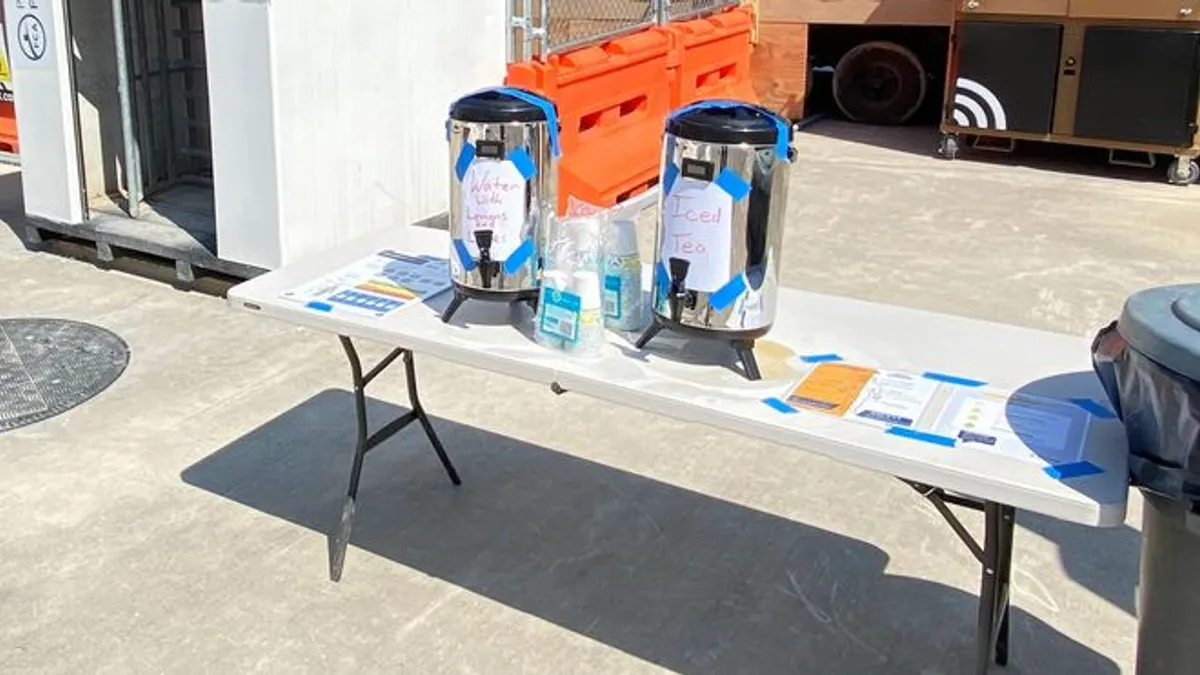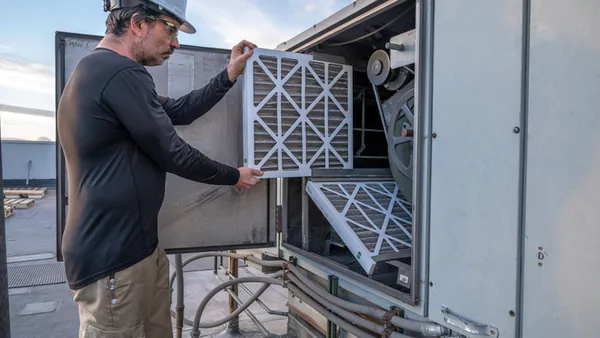Dive Brief:
- The largest U.S. contractor by revenue is working to gain a deeper understanding of the effects of high heat on the health of construction workers.
- This month, Turner Construction will study 200 construction workers on a confidential project in the Midwest to measure the impact of heat. Their core temperatures, heart rate and other vitals will be monitored as they go about their day.
- New York City-based Turner and its research team hope the data will paint a better picture of what heat mitigation techniques work and guide potential development of other measures to promote jobsite health.
Dive Insight:
The research team consists of Turner Construction and its foundation; Broomfield, Colorado-based Flatiron Construction; insurance companies Liberty Mutual and Chubb; and health research nonprofit La Isla Network.
Last summer, Turner conducted a pilot study over three days to analyze the effects of heat on workers’ body temperature, also with Washington, D.C.-based La Isla Network. Workers swallowed a pill-sized data collection device that remained in their bodies for 24 hours and allowed researchers to continuously monitor internal body temperatures.
The study found 43% of the 33 workers had core temperatures over 100.4 degrees, even in cooler than typical summer conditions. It confirmed the importance of hydrating in the morning and all throughout the day, regardless of temperature or work activity, Turner Resilience Program Manager Mónika Serrano said in the release.
The current study will be much larger than last summer’s, and the results should come with more recommendations for beating the heat, Chris McFadden, vice president of communications and marketing at Turner, told Construction Dive.
Steve Spaulding, vice president and chief environmental health and safety officer for Turner, detailed the company’s heat safety plans for Construction Dive earlier this summer.
“Every contract, every job that we have, climate is taken into account when we’re building that job out,” Spaulding told Construction Dive. Those plans include hydration and shade stations to cool off, but the contractor has also employed other creative techniques, such as one in a San Diego jobsite’s bathrooms.
“It sounds funny to talk about, but it had a urine color chart. So it was posted where you were looking,” Spaulding said, so workers could compare and see if they needed to hydrate.















